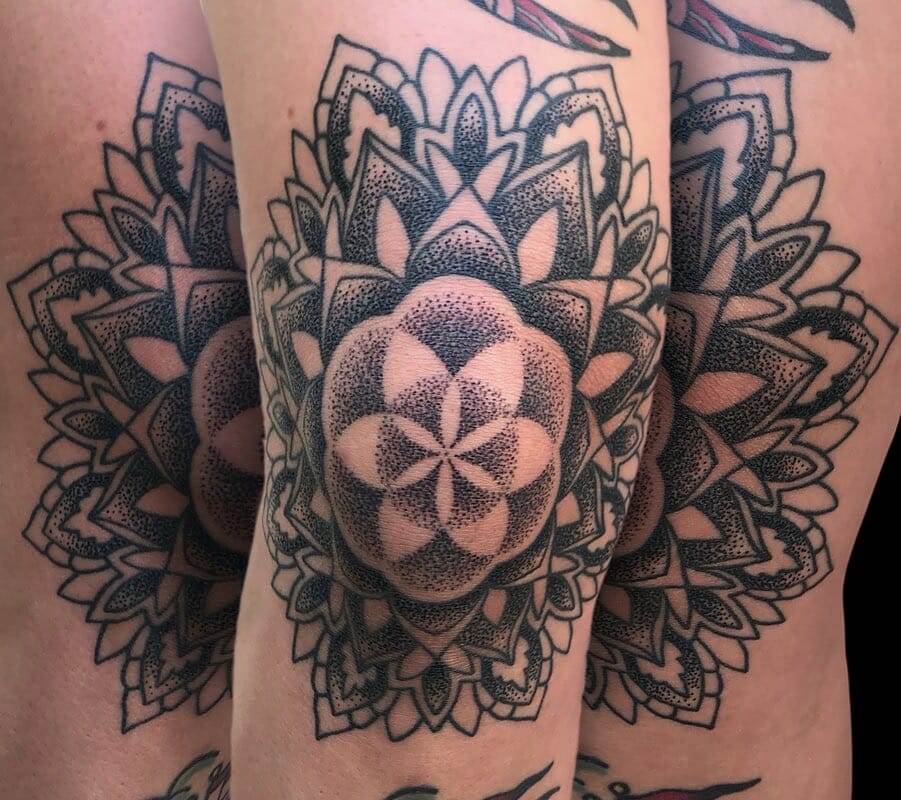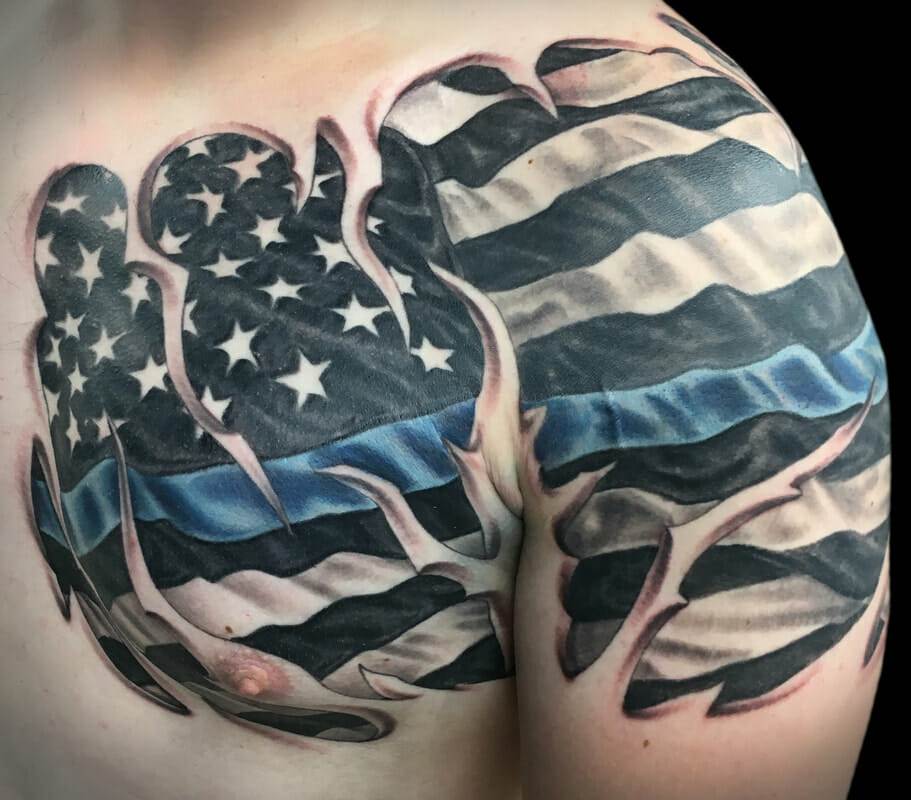Tattooing is the art of permanently marking the skin with ink or other pigments. It has been practiced for thousands of years and has become increasingly popular in modern culture. Tattoos are a form of self-expression, allowing individuals to showcase their personal beliefs, interests, and experiences. They can be seen as a way to commemorate loved ones, express creativity, or simply adorn the body with beautiful artwork.
In recent years, tattoos have gained mainstream acceptance and have become more prevalent in society. They are no longer seen as taboo or associated solely with rebellious subcultures. Many celebrities, athletes, and public figures proudly display their tattoos, further contributing to their popularity. Tattoo parlors have also become more common, offering a wide range of designs and styles to choose from.
The Origin of Tattooing: Tracing its Roots
The practice of tattooing dates back thousands of years and can be traced to various ancient civilizations. The earliest evidence of tattooing comes from Ötzi the Iceman, a mummy discovered in the Italian Alps in 1991. Ötzi lived around 5,300 years ago and had over 60 tattoos on his body. These tattoos were made by rubbing charcoal into incisions on his skin.
In ancient times, tattoos served a variety of purposes. They were used for identification, as a form of protection, and as a symbol of status or rank. In some cultures, tattoos were believed to have magical or spiritual powers. They were also used as a rite of passage or to mark important life events such as marriage or childbirth.
Tattooing in Ancient Civilizations: A Look Back in Time
Tattooing was practiced in several ancient civilizations, including Egypt, Greece, and Rome. In ancient Egypt, tattoos were primarily worn by women and were often associated with fertility and protection. They were also used to signify social status and were commonly found on the bodies of priests and priestesses.
In ancient Greece, tattoos were seen as a sign of belonging to a particular group or community. They were often used to mark slaves or prisoners, but could also be found on soldiers and athletes. In Rome, tattoos were used to identify criminals and slaves. However, they were also worn by soldiers as a form of protection and to showcase their bravery in battle.
Tattooing in Traditional Cultures: A Celebration of Art and Identity
Tattooing has long been an integral part of traditional cultures around the world. In Polynesia, tattoos have deep cultural and spiritual significance. They are seen as a way to connect with ancestors and to express one’s identity. Traditional Polynesian tattoos, known as tā moko or tatau, are intricate designs that cover large areas of the body. Each tattoo is unique and tells a story about the individual’s heritage and life experiences.
In Japan, tattoos have a long history and are associated with the yakuza, the Japanese mafia. However, traditional Japanese tattoos, known as irezumi, have a rich cultural heritage and are considered works of art. They often depict mythical creatures, gods, or heroes and are created using a hand-poked method called tebori.
Other traditional cultures that practice tattooing include the Maori of New Zealand, the Berbers of North Africa, and the Ainu of Japan. In these societies, tattoos are seen as a form of cultural preservation and a way to honor their ancestors.
The Evolution of Tattooing: From Taboo to Mainstream
Tattooing has come a long way from its origins as a tribal practice. In Western culture, tattoos were once associated with sailors, bikers, and other countercultural groups. They were seen as rebellious and often carried negative connotations. However, in recent decades, tattoos have become more accepted and mainstream.
The history of tattooing in Western culture can be traced back to the 18th century, when Captain James Cook and his crew encountered tattooed Polynesians during their voyages. This sparked interest in tattoos among Europeans, and soon tattoo parlors began to appear in major cities.
In the 20th century, tattoos became popular among soldiers during World War
They were seen as a way to commemorate fallen comrades and to express patriotism. After the war, tattoos continued to gain popularity among various subcultures, including punks, rockers, and bikers.
In the 21st century, tattoos have become more mainstream than ever before. They are no longer limited to specific subcultures and can be found on people from all walks of life. Tattoos are now seen as a form of self-expression and personal style. They can be small and discreet or large and elaborate, depending on the individual’s preference.
The Role of Tattooing in Religion and Spirituality

Tattoos have played a significant role in religious traditions throughout history. In Christianity, tattoos are often seen as a way to express one’s faith or devotion to God. They can be used to display religious symbols such as crosses or verses from the Bible. Some Christians believe that tattoos are a form of body modification that goes against the teachings of the Bible, while others see them as a way to honor God’s creation.
In Hinduism, tattoos are associated with spirituality and are often used as a form of protection or blessing. They can be used to depict gods or goddesses, sacred symbols, or mantras. Tattoos are also common among Buddhist practitioners, particularly in Southeast Asia. They are seen as a way to show devotion to the Buddha and to remind oneself of Buddhist teachings.
Tattooing in the Military: A Symbol of Service and Sacrifice
Tattoos have a long history in the military and are often seen as a symbol of service and sacrifice. In ancient times, tattoos were used to mark soldiers and to identify them in case of capture or death. In more recent history, tattoos have become a way for soldiers to commemorate their service and to honor fallen comrades.
During World War II, tattoos became popular among soldiers as a way to express patriotism and to remember their time in the military. Many soldiers got tattoos of their unit insignia, military emblems, or the names of their fellow soldiers. Tattoos were also used to mark significant events such as battles or deployments.
Today, tattoos are still common among military personnel. They are often used to commemorate deployments, honor fallen comrades, or showcase military pride. Military tattoos can be found on soldiers from all branches of the military and are seen as a way to bond with fellow service members.
Tattooing and Women: Breaking Stereotypes and Empowering Expression
The history of women and tattoos is complex and has evolved over time. In ancient cultures, women often had tattoos as a form of adornment or to signify their status within the community. However, in Western culture, tattoos were traditionally seen as masculine and were not widely accepted among women.
In the 19th and early 20th centuries, women with tattoos were often associated with circus performers or sideshow attractions. They were seen as exotic and rebellious, challenging societal norms of femininity. However, as attitudes towards women and tattoos began to change, more women started getting tattooed.
In recent decades, tattoos have become increasingly popular among women. They are seen as a form of self-expression and empowerment, allowing women to reclaim their bodies and challenge traditional beauty standards. Women now make up a significant portion of tattoo enthusiasts and can be found in all areas of the tattoo industry, from artists to collectors.
The Dark Side of Tattooing: Criminal Connections and Stigma
Despite the growing acceptance of tattoos in mainstream culture, there is still a stigma associated with them. Tattoos have long been associated with criminal activity, particularly in the Western world. In the past, tattoos were often used to mark criminals or gang members, making it difficult for individuals with tattoos to find employment or be accepted in society.
While the association between tattoos and criminal activity is largely based on stereotypes and misconceptions, it can still have real-world consequences. People with visible tattoos may face discrimination in the workplace or be judged based on their appearance. This stigma can also affect individuals who have tattoos for personal or cultural reasons, reinforcing negative stereotypes and misconceptions.
However, attitudes towards tattoos are slowly changing, and many people now see them as a form of self-expression and personal style. As more people get tattoos and share their stories, the stigma surrounding tattoos is gradually being challenged.
Tattooing in Contemporary Culture: Trends and Innovations
Tattooing has evolved significantly over the years, with new trends and innovations constantly emerging. In recent years, minimalist tattoos have become popular, featuring simple designs and clean lines. Watercolor tattoos, which mimic the look of watercolor paintings, have also gained popularity for their vibrant colors and artistic style.
Another trend in tattooing is the use of geometric designs and patterns. These tattoos often feature intricate shapes and lines that create a sense of symmetry and balance. Mandala tattoos, which are inspired by Hindu and Buddhist art, are a popular example of this trend.
Technological advancements have also had a significant impact on tattooing. The invention of tattoo machines in the late 19th century revolutionized the industry, making it faster and more efficient. Today, tattoo artists have access to a wide range of tools and equipment that allow them to create intricate designs with precision.

The Future of Tattooing: Exploring New Possibilities and Challenges
The future of tattooing holds many possibilities and challenges. With advancements in technology, new tattooing techniques and styles are constantly being developed. One emerging trend is the use of biometric tattoos, which can monitor the wearer’s health or serve as a form of identification. These tattoos could potentially replace traditional forms of identification such as passports or driver’s licenses.
However, as tattooing becomes more mainstream, there are also concerns about cultural appropriation and the commodification of tattoos. Some argue that certain tattoo styles or symbols should be reserved for specific cultures or communities and that appropriating them can be disrespectful or offensive.
Another challenge facing the tattoo industry is the regulation of tattoo parlors and artists. While many countries have regulations in place to ensure the safety and hygiene of tattooing practices, there are still areas where regulations are lacking. This can lead to unlicensed or untrained individuals performing tattoos, putting clients at risk of infection or other complications.
Despite these challenges, the future of tattooing looks bright. Tattoos will continue to be a form of self-expression and personal style, allowing individuals to showcase their creativity and individuality. As attitudes towards tattoos continue to evolve, we can expect to see even more diverse and innovative designs in the years to come.



